W przypadku skuterów podwodnych nurkowie często dzielą się na dwie grupy: nie mają żadnego lub mają dziewięć. To nie jest tylko żart. Nurkowie z „dziewięcioma skuterami” uważają je za tak niezbędne, że przechowują je w kluczowych miejscach nurkowych, aby eksplorować ogromne wraki na jednym zbiorniku. To podkreśla główną debatę: czy te maszyny to narzędzia zmieniające zasady gry, czy też — jak sugeruje obóz „zero skuterów” — po prostu drogie, wymagające dużo konserwacji obciążenia? Prawdziwe pytanie brzmi: do którego obozu ty należysz?
Zalety skuterów podwodnych: dlaczego ktoś miałby mieć dziewięć
Co sprawia, że skuter podwodny zmienia się z „wysokokosztowego obciążenia” w „narzędzie zmieniające zasady gry”, które ktoś kupiłby dziewięć razy? Odpowiedź to nie tylko „zabawa”. To zestaw potężnych, praktycznych zalet, które dla odpowiedniej osoby zasadniczo zmieniają to, co jest możliwe podczas nurkowania.
1. Drastycznie zmniejsz zużycie powietrza
To jest najważniejsza korzyść dla nurków z butlą. Zastępując męczące machanie płetwami silnikiem, znacznie zmniejszasz wysiłek fizyczny. To bezpośrednio obniża tempo zużycia powietrza (SAC), pozwalając, by twój zbiornik wytrzymał znacznie dłużej i wydłużając czas nurkowania bez dekompresji.
2. Połącz dwa miejsca nurkowe w jedną wyprawę
DPV znacznie rozszerza twój efektywny zasięg. Miejsca, które wcześniej wymagały dwóch oddzielnych nurkowań — takie jak duży wrak statku i pobliski system raf — często można w pełni zwiedzić na jednym zbiorniku. Szczególnie dotyczy to nurkowań przybrzeżnych, zamieniając 300-metrowy spacer do krawędzi w dwuminutowy dojazd.
3. Poruszaj się szybciej przy mniejszym wysiłku
Poza prostą ekscytacją, skuter wodny zapewnia funkcjonalną prędkość. Możesz użyć wolnego trybu 1 m/s (2,2 mph), aby dokładnie skanować rafę lub przełączyć się na wyższy bieg (jak 2 m/s, czyli 4,5 mph w Sublue Navbow), by szybko dotrzeć do następnego punktu zainteresowania, prawie się nie męcząc.
4. Uczyń nurkowanie dostępnym dla większej liczby osób
Dla osób o ograniczonej wytrzymałości, słabej sile pływania lub problemach z mobilnością fizyczną, skuter morski jest potężnym wyrównywaczem szans. Zapewnia niezbędny napęd, pozwalając im komfortowo i bezpiecznie uczestniczyć w podwodnej eksploracji z przyjaciółmi i rodziną.
5. Pokonaj wyczerpujące prądy
Pływanie pod prąd, nawet łagodny, wyczerpuje twoją energię i zapas powietrza w alarmującym tempie. Skuter zapewnia stały, niezawodny ciąg potrzebny do przecinania umiarkowanych prądów, pomagając trzymać się planu nurkowania i wrócić do punktu wyjścia bez męczącej walki.
Wady podwodnych skuterów: dlaczego dla niektórych to „twarde nie”
Korzyści są kuszące, ale wiążą się z istotnymi, realnymi kompromisami. To praktyczne obciążenia i nowe zagrożenia, które powodują, że większość nurków — obóz „zero-skutera” — waha się.
1. Wysokie koszty zakupu i baterii
Niezawodny DPV do nurkowania na otwartym morzu jest drogi, często zaczynając od ponad 1000 dolarów. Nie obejmuje to wysokiego kosztu jego głównego materiału eksploatacyjnego: baterii. Kilka lat później pojedyncza oficjalna bateria zamienna może być szokująco droga, czasem kosztując tyle, co nowy skuter dla początkujących.
2. Ograniczenia w podróżach lotniczych i objętość
To jest największa logistyczna przeszkoda. Podwodne skutery są ciężkie i niewygodne w transporcie (od 4,5 kg do ponad 8,5 kg). Co gorsza, ich duże baterie litowo-jonowe są zabronione na samolotach pasażerskich. To zmusza do wyboru modelu z mniejszymi, wymiennymi bateriami zgodnymi z przepisami linii lotniczych lub pozostawienia go w domu.
3. Ograniczony czas pracy i planowanie nurkowania
Żywotność baterii jest ograniczona i gwałtownie spada przy dużych prędkościach (np. z 60 minut przy niskiej prędkości do zaledwie 18 przy wysokiej). Musisz planować nurkowanie z uwzględnieniem baterii, rezerwując wystarczającą ilość energii na powrót i sytuacje awaryjne. Gdy bateria się wyczerpie, staje się ciężkim obiektem, który trzeba holować.
4. Rygorystyczna codzienna konserwacja
Podobnie jak automat oddechowy, skuter morski wymaga pielęgnacji. Po każdym nurkowaniu musi być dokładnie spłukany świeżą wodą, aby zapobiec niszczeniu uszczelek i silnika przez sól i piasek.

Kto naprawdę powinien kupić skuter podwodny?
Więc jak rozpoznać, czy należysz do obozu fanatyków "dziewięciu skuterów", czy do tych, którzy żałują "zera skuterów"? Wszystko zależy od twoich głównych potrzeb. Różni użytkownicy potrzebują zupełnie innych urządzeń.
Przypadkowy snorkeler / rodzina
Główna potrzeba: Bezpieczna, łatwa w użyciu zabawa na powierzchni.
Kluczowe cechy: Niższa cena, solidne osłony śmigieł dla bezpieczeństwa, proste sterowanie (często jedna prędkość) oraz dodatnia wyporność, dzięki czemu urządzenie unosi się na powierzchni, jeśli je puścisz.
Nurek rekreacyjny i freediver
Główna potrzeba: Efektywne eksplorowanie raf lub wraków w granicach rekreacyjnych.
Kluczowe cechy: Dobra głębokość pracy (np. 40m / 131ft), niemal neutralna wyporność umożliwiająca łatwe unoszenie się, wiele ustawień prędkości oraz niezawodna bateria. To zrównoważona kategoria "wszechstronna" (np. Sublue Navbow).
Podwodny fotograf/wideograf
Główna potrzeba: Płynny, stabilny ruch dla stabilnego filmowania, z wolną ręką.
Kluczowe cechy: Idealna neutralna wyporność, zintegrowane mocowania na kamerę oraz opcja sterowania jedną ręką (np. zestaw DTC), aby druga ręka była wolna do regulacji kamery.
Entuzjasta wysokich osiągów
Główna potrzeba: Maksymalna prędkość i moc.
Kluczowe cechy: Silnik o dużym ciągu (np. 21kgf / 46lbf), maksymalne prędkości powyżej 6 mph oraz zaawansowane funkcje, takie jak ekran LCD pokazujący prędkość i dane o baterii (np. Sublue Vapor).
Techniczny i jaskiniowy nurek
Główna potrzeba: ekstremalna niezawodność i zdolność do długiego zasięgu w niebezpiecznych środowiskach.
Kluczowe cechy: modele „robocze” z solidną metalową konstrukcją, projektami odpornymi na awarie, bardzo długim czasem pracy i wymiennymi bateriami o dużej pojemności. Dla tej grupy DPV to krytyczny sprzęt misji, a nie zabawka.

Rozstrzygnij swoją debatę „0 czy 9”!
Orzeczenie „czy warto” nie jest uniwersalne. Hulajnoga to potężne narzędzie, ale wymagające prawdziwego zaangażowania w koszty, logistykę podróży i szkolenie z zakresu bezpieczeństwa. Dla rekreacyjnego użytkownika to luksusowa zabawa; dla poważnego nurka to zmieniacz zasad gry, jeśli korzyści przewyższają znaczne obciążenia. Właściciel „dziewięciu hulajnóg” po prostu zdecydował, że dla jego konkretnych potrzeb kompromis jest wart zachodu. Ostateczna decyzja zależy od tego, czy naprawdę jesteś gotów zrobić to samo.
Najczęściej zadawane pytania o hulajnogi podwodne
P1: Czy warto spróbować hulajnóg podwodnych?
Tak, zdecydowanie. Dla odpowiedniej osoby są one narzędziem zmieniającym zasady gry. Dla poważnych nurków wydłużają czas na dnie i pozwalają eksplorować ogromne obszary, do których nigdy nie dotarliby tylko na płetwach. Dla rekreacyjnych snorkelerów dodają niesamowitą dawkę zabawy i bezwysiłkowej eksploracji podczas dnia na plaży. Chociaż logistyka posiadania takiego urządzenia jest skomplikowana, doświadczenie z jego używania jest niemal powszechnie uważane za warte zachodu.
P2: Czy potrzebuję specjalnego szkolenia, aby używać DPV do nurkowania z akwalungiem?
Tak. Chociaż hulajnoga morska jest prosta w użyciu podczas snorkelingu na powierzchni, korzystanie z niej na głębokości wprowadza nowe ryzyka i wymaga nowych umiejętności. Musisz nauczyć się zarządzać swoją wypornością podczas ruchu, unikać niebezpiecznego szybkiego wynurzania i radzić sobie z potencjalnymi awariami, takimi jak niekontrolowany silnik. Specjalistyczny kurs certyfikacyjny (jak kurs DPV PADI) jest niezbędny dla każdego nurka z akwalungiem.
P3: Jak mogę podróżować samolotem z moją hulajnogą podwodną?
To największe wyzwanie logistyczne. Większość linii lotniczych zabrania przewożenia dużych baterii litowo-jonowych (zazwyczaj powyżej 160Wh) we wszystkich bagażach. Twoją jedyną opcją jest zakup hulajnogi specjalnie zaprojektowanej do podróży, która ma mniejsze, wyjmowane baterie (często poniżej 100Wh), które musisz mieć przy sobie w bagażu podręcznym. Zawsze sprawdzaj politykę konkretnej linii lotniczej przed lotem.
P4: Co się stanie, jeśli puścić moją hulajnogę pod wodą?
To zależy całkowicie od wyporności modelu. Hulajnogi zaprojektowane do rekreacyjnego snorkelingu zazwyczaj mają dodatnią wyporność, co oznacza, że unoszą się na powierzchni. Większość zaawansowanych DPV do nurkowania z akwalungiem jest zaprojektowana tak, aby być neutralna lub lekko ujemna na głębokości. Pozwala to nurkowi „zaparkować” hulajnogę (np. przypinając ją do D-ringu), aby unosiła się w miejscu, pozostawiając ręce wolne.

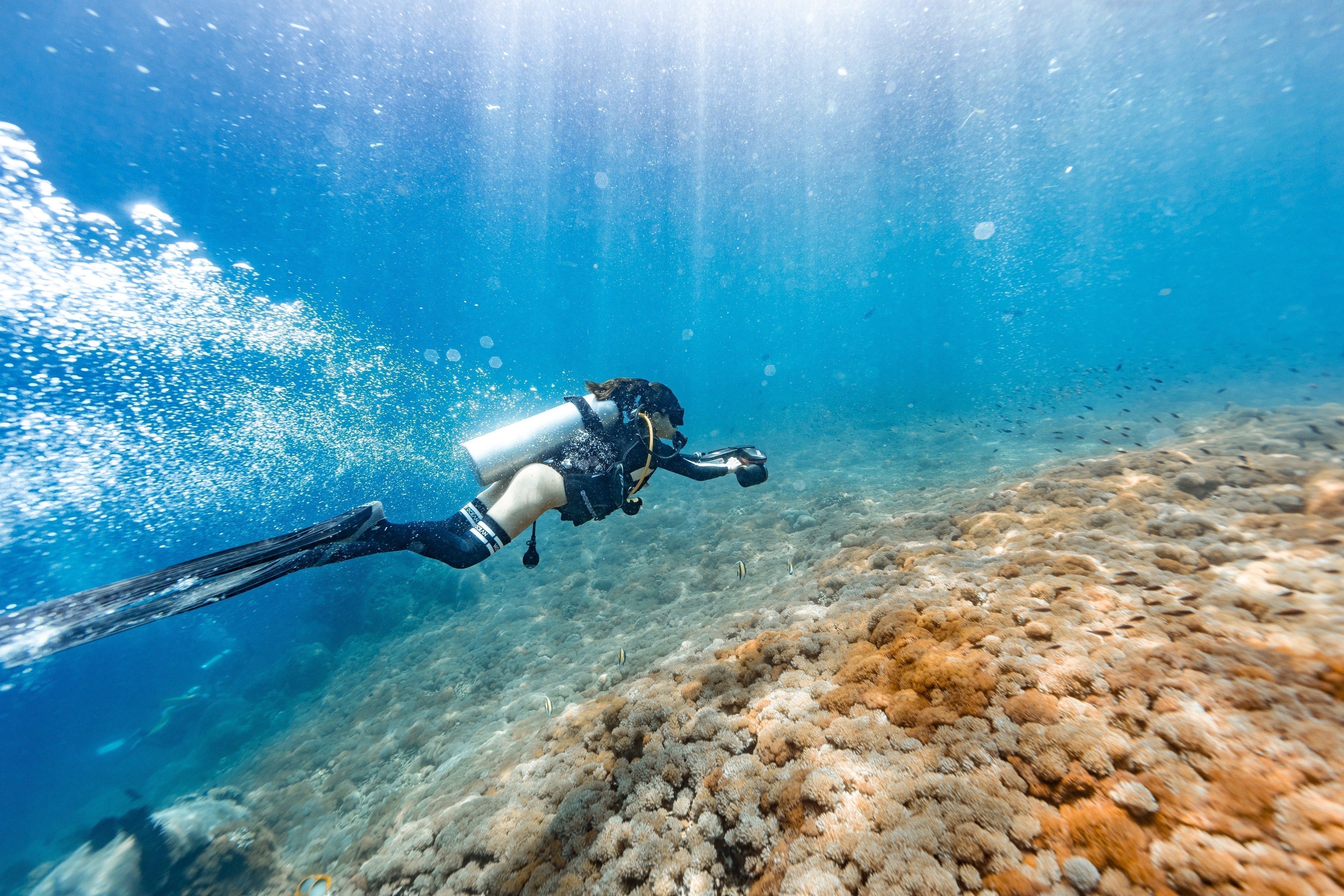


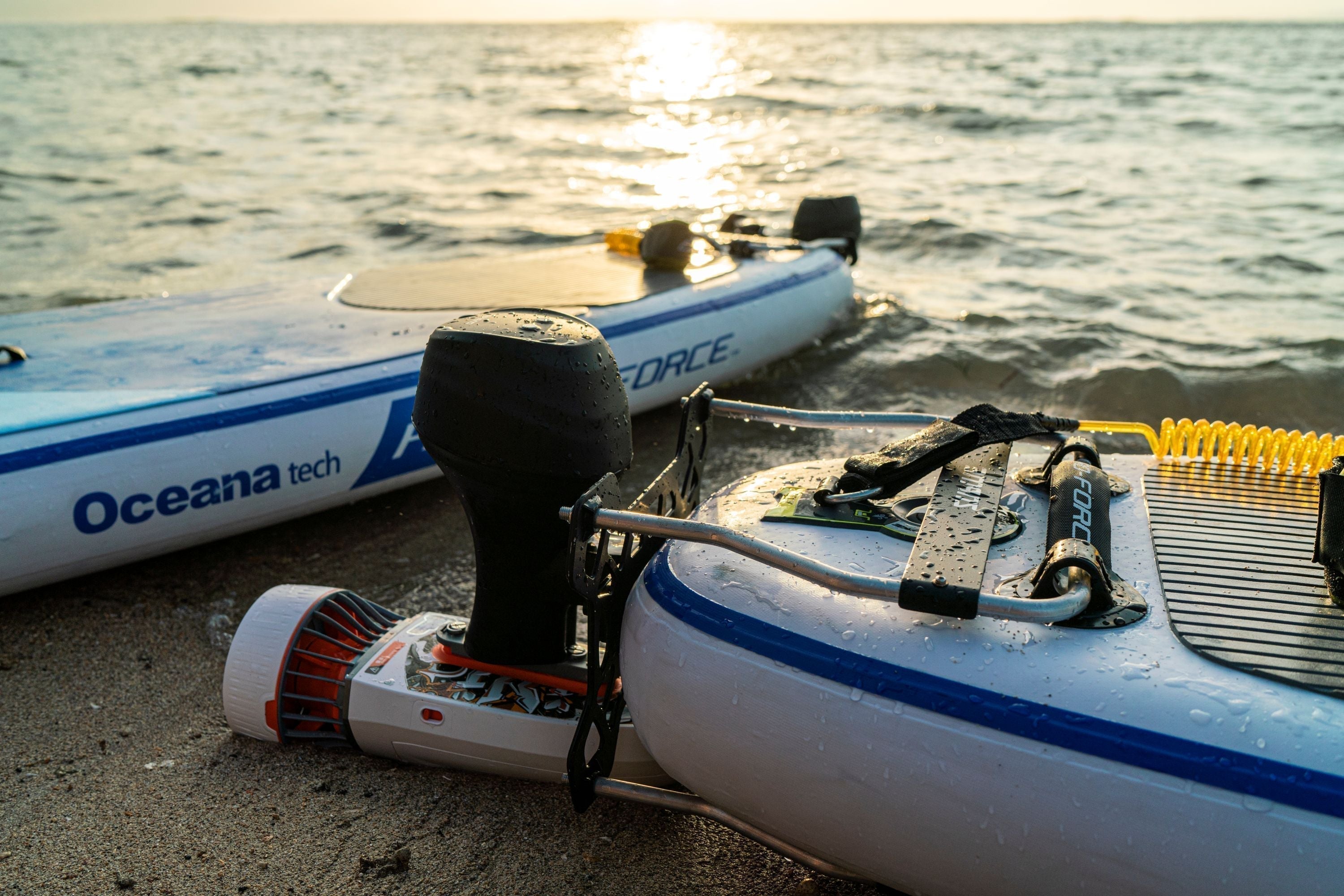
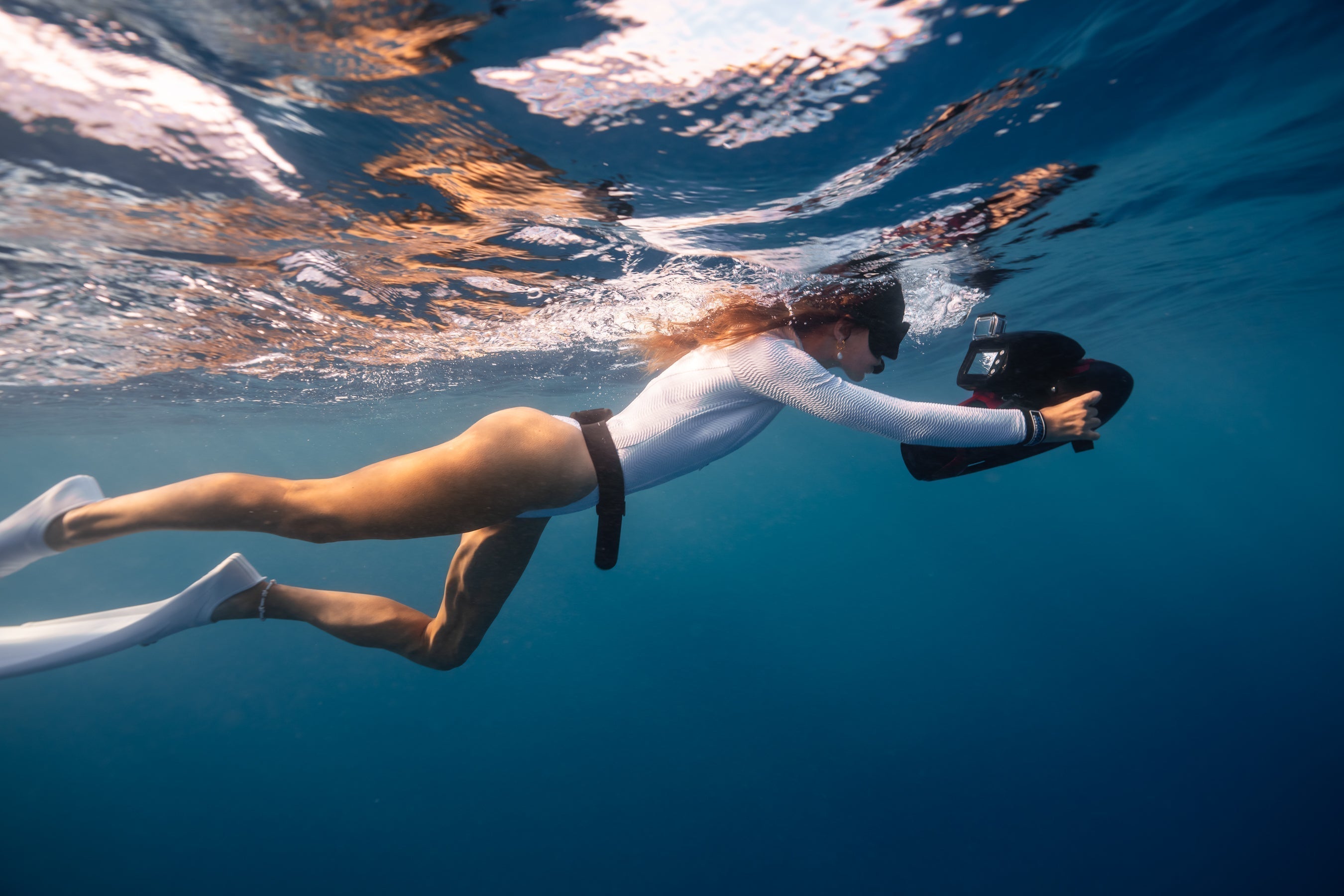


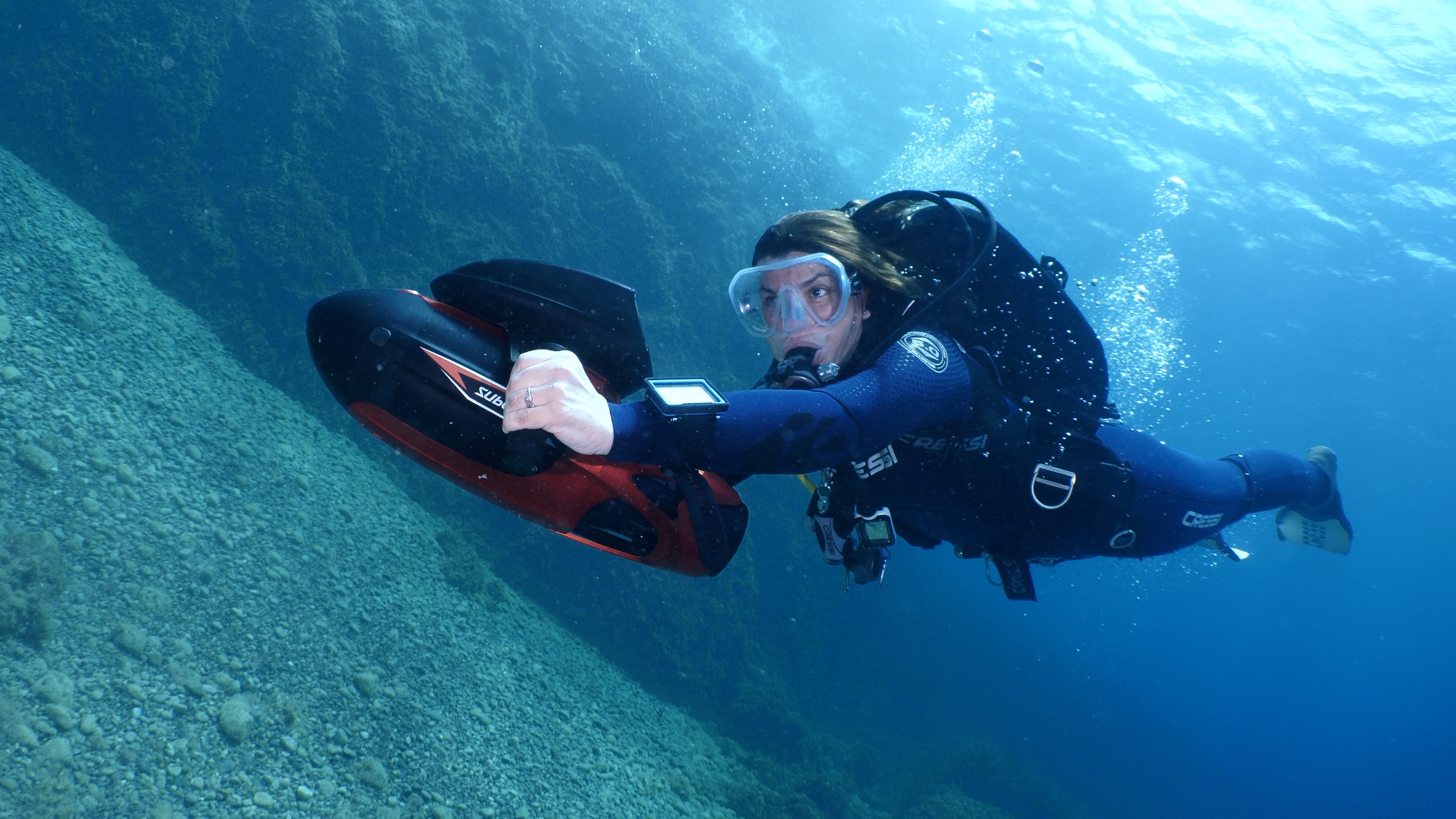
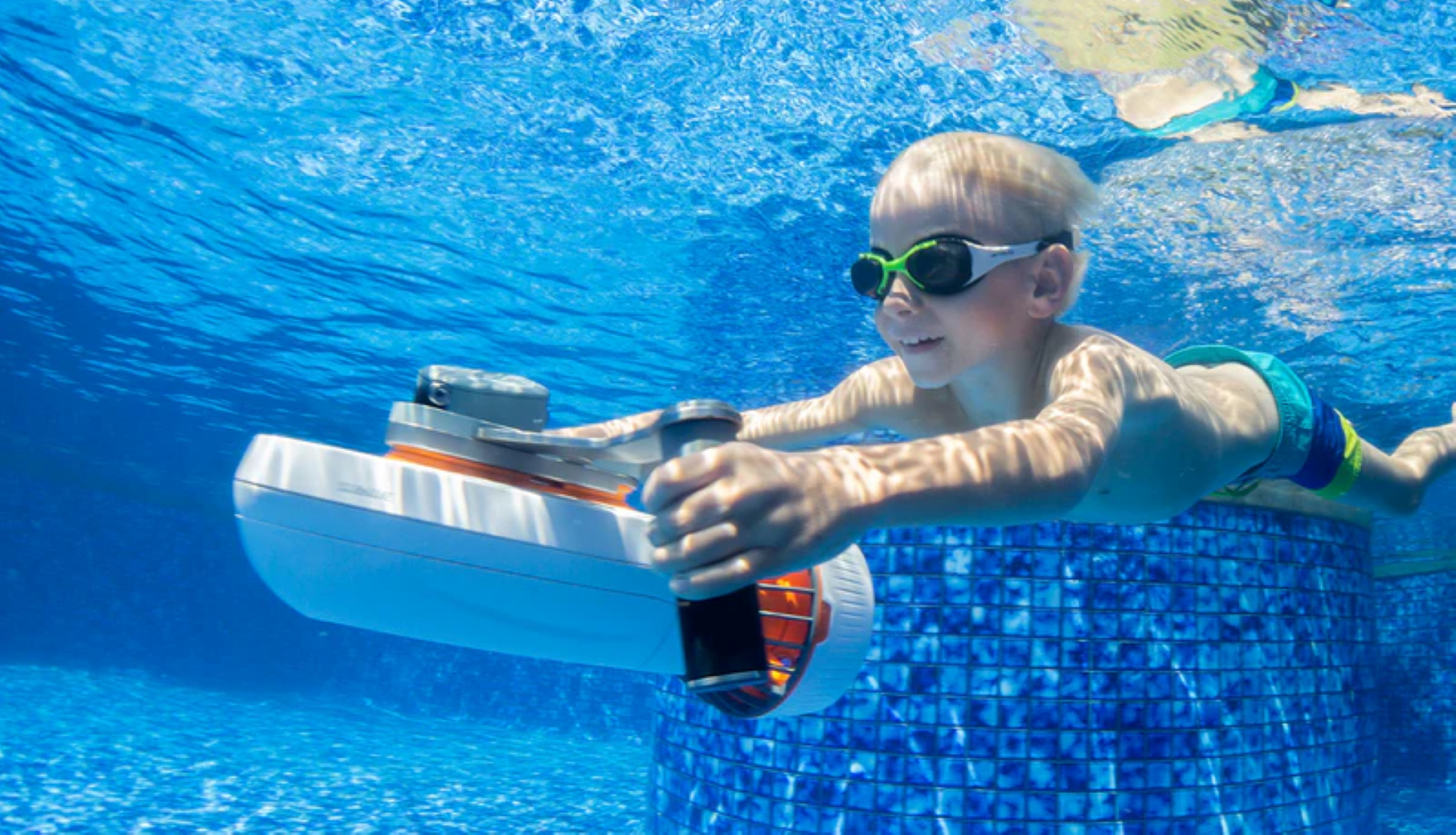
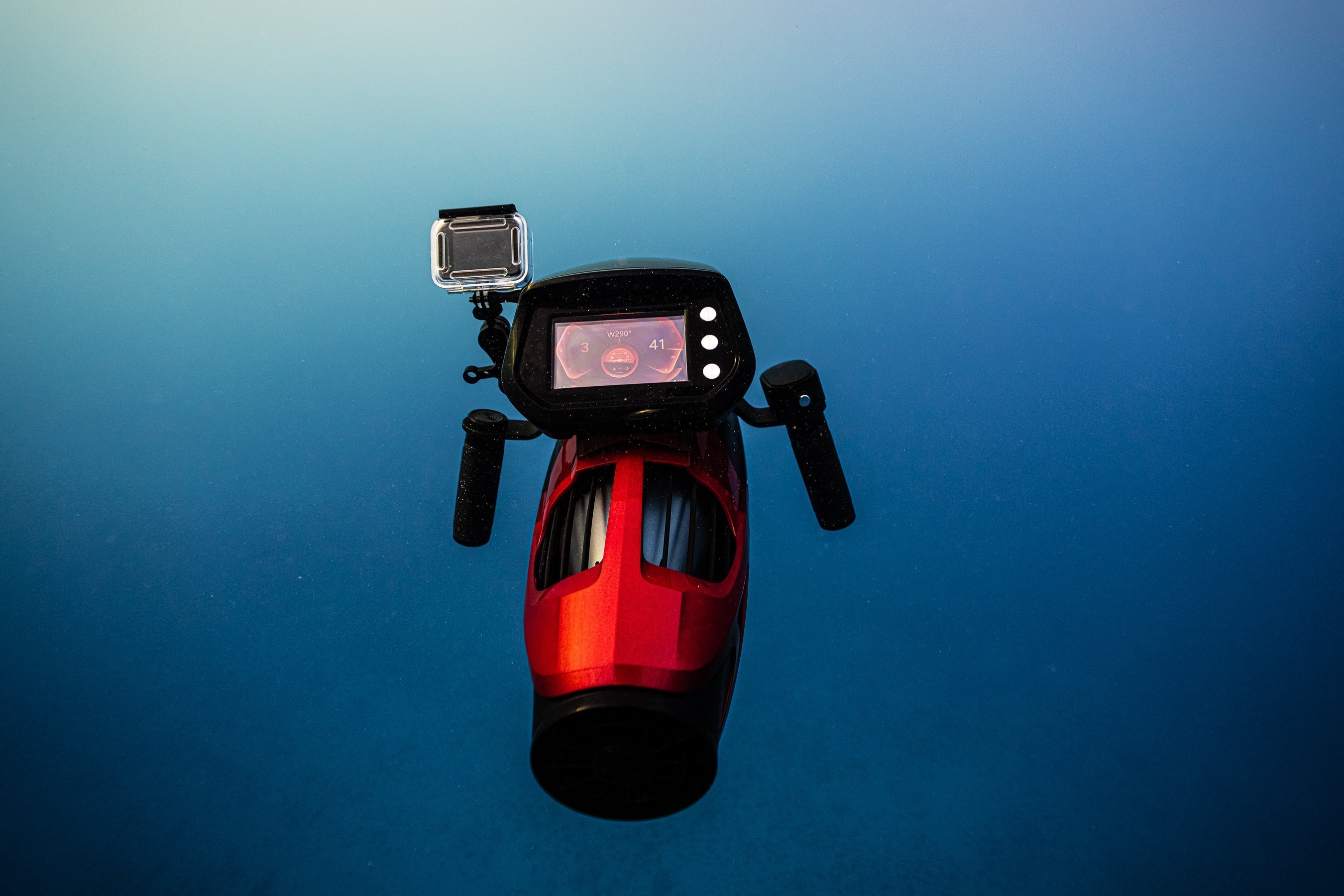
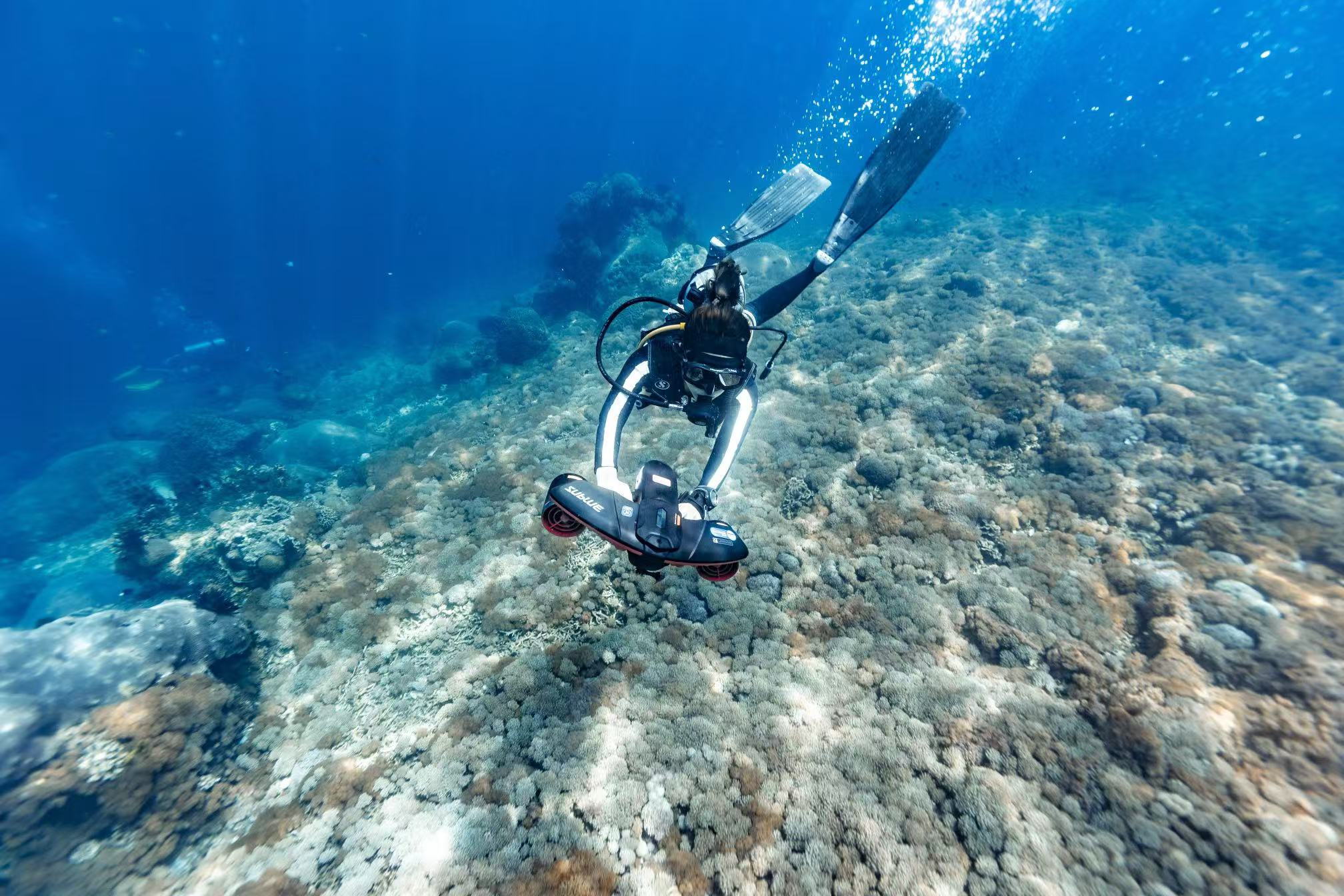
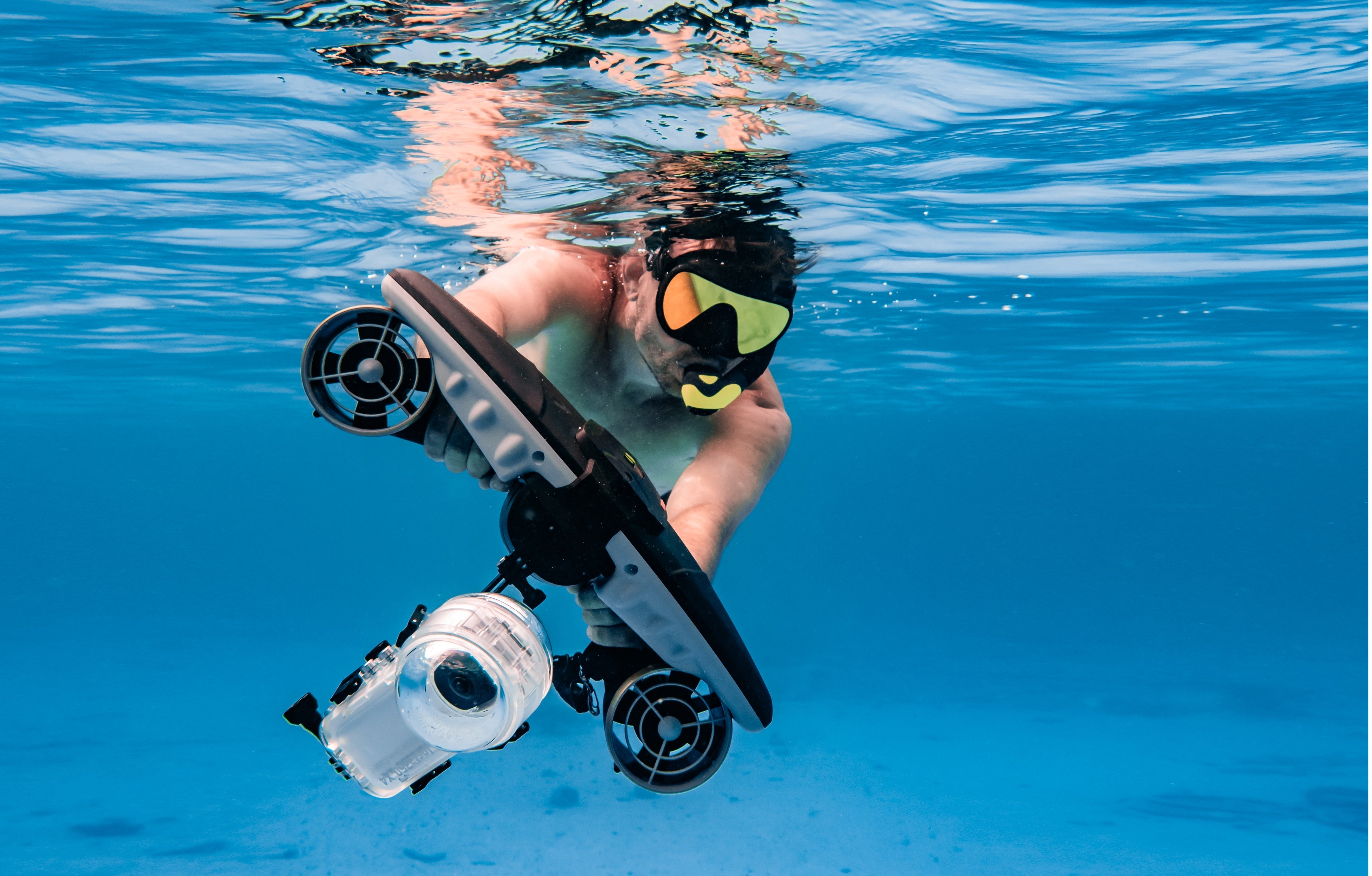


Udostępnij:
Jakie są niektóre z obowiązkowych do wypróbowania wodnych atrakcji dla dzieci?
Skuter podwodny "Thrust": czy większy zawsze znaczy lepszy?